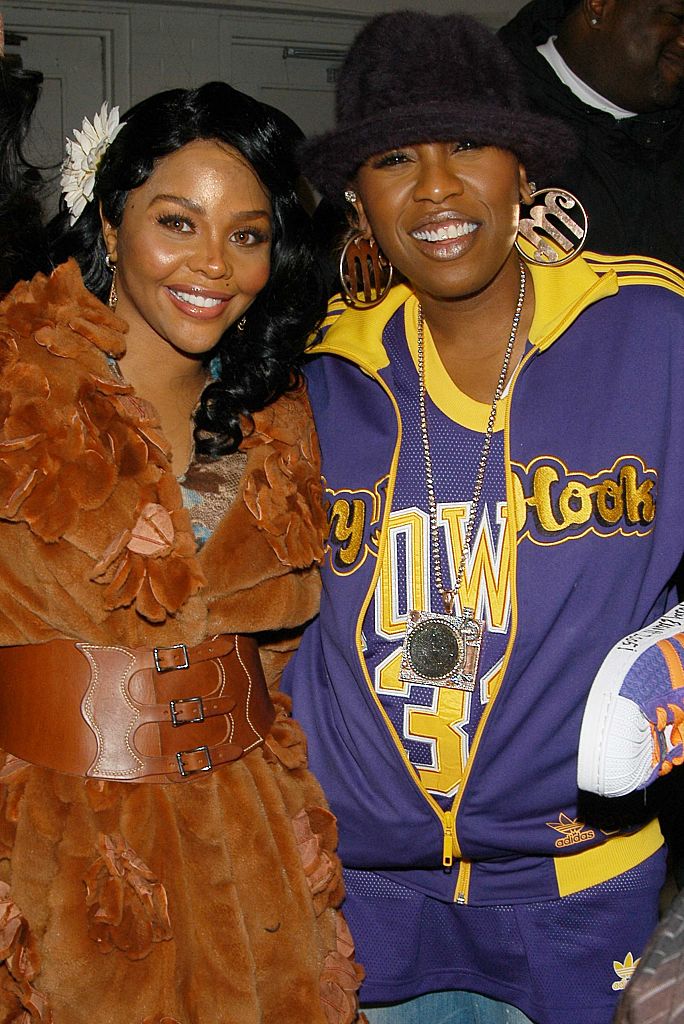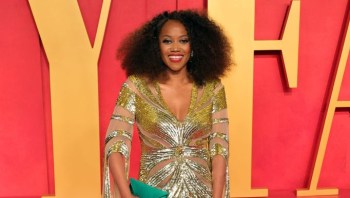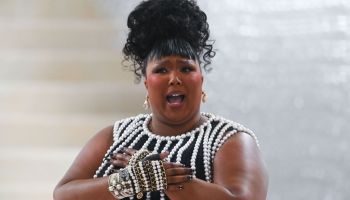
Source: Patrick McMullan / Getty
The story of Black women in hip-hop is one of extremes. Black women in hip-hop are erased or hypervisible. Black women are the martyrs for the ills and wins of a genre they are never given credit for. In many cases, Black women have and are still leading the artistic, political and cultural edge that the industry is always trying to catch up to.
The history of Black women in hip-hop is vast, nuanced, joyful and traumatizing. It is not new or even interesting to delve further into the trauma Black women have faced historically. However, it is important to place these names and figures in the reality they lived through and how their legacies have created the platform that makes space for the dynamic mix of Black women rappers thriving today. These are Black women who have propelled the genre and whose names have been left out of too many history books.
The story of hip-hop begins with Sylvia Robinson, known as the “Mother of Hip Hop” who formed the Sugarhill Gang that wrote “Rapper’s Delight” in 1979. “Rapper’s Delight” became the first commercially successful hip-hop song and solidified hip-hop as a genre. However, “Rapper’s Delight” was not the only hip-hop song or the most important of that year. That same year, “Rhymin and Rappin‘” by Tanya “Sweet Tee” and Paulette Winley also hit the airwaves. The song was written by the two sisters of their father’s Winley Records and the Harlem Underground Band. “Rhymin and Rappin’” positioned the Winley sisters as the First Ladies of Hip Hop.
The 1980s and early 1990s in hip-hop gave us a huge range of Black women artists from the likes of Salt n Peppa, Lady of Rage, MC Lyte — who was the first woman to release a solo rap album in 1988 — to Monie Love of Native Tongues and Bahamadia, to name a few.
“There may have been times when promoters didn’t want to pay me what I deserved. In a line-up, they didn’t want to put me where my songs warranted me going,” said MC Lyte in a recent interview. “But none of it affected me to a degree to where it mattered. There may have been setbacks but I never let get to me.”
Queen Latifah’s debut album, All Hail The Queen, was released in 1989. In 1993, her most famous single, “U.N.I.T.Y,” would later become a catalyst for the birth of the multitalented hip-hop artist: a hip-hop artist who can rap, act and build out celebrity in the age of the early 1990s Black cultural renaissance.
The ease at which Queen Latifah made political commentary and lyrical ability central to her work is what propelled her to stardom, and later, her role as Khadija James on Living Single in 1993. Queen Latifah also connected with Monie Love for “Ladies First,” one of the pioneering women collaborative tracks that later influenced many other women collabs, from Ladies Night featuring Lil Kim, Da Brat, Left Eye, Angie Martinez, and Missy Elliott to the modern “Lady Marmalade.”
The mid-to-late 1990s brought about the Black women rap icon who, from the work of past women and the new fast-pitch hip-hop industry that was now a global phenomenon, was ready to crown its first Queen of Rap. While it will vary based on who you ask, it is known that Lil Kim of Brooklyn, NY firmly cemented herself as the Queen of Rap while a member of Junior M.A.F.I.A. Alongside Lil Kim, we saw Lauryn Hill bring in the first hip-hop album of the year award at the 1999 Grammys. This came after a split from The Fugees in 1997 and the release of The Miseducation of Lauryn Hill in 1998. The latter is still to this day one of the most prolific hip-hop albums of all time.
It would be a disservice to discuss Black women in hip-hop without making space for the living legend Missy Elliott, who is notably one of the most prominent producers, lyricists and cultural workers of the genre. Missy Elliott is just now beginning to receive flowers for her work as a producer, songwriter, and lyricist. Her debut album, Supa Dupa Fly, allowed her to remain a solo artist and continue her collaborative work with Timbaland. Supa Dupa Fly landed her a Grammy nomination and catalyzed Miss Misdemeanor into her role as a leader of the global phenom that hip-hop became in the late 1990s.
The early 2000s brought about a new type of rambunctious energy to women in rap and hip-hop. It brought about the rise of the R&B girl group and later the lone pop star. Destiny’s Child, Kelis, Princess, and Diamond of Crime Mob all took the reigns of Black femininity in new ways in the new millennia. The rise of southern Black women in rap was led by the club anthem “Stilettos” by Crime Mob in 2004.
The Black women in the game have taught the industry and it’s most notable lessons on fullness. Whether it be creating bodies of work that are political, sorrowing and filled with rage, Black women have been able to do it all without question. That ability to demand their fullness, however, has been used against Black women entering hip-hop.
Cosigns and the importance of Black male approval have been the crutch and burden Black women in hip-hop have survived through. The physical abuse, mismanagement, and industry betrayal that Black women of hip-hop have persevered through are truly astounding. It is a legacy that should not be seen as admirable, but a systematic reality that Black women in the game no longer have to be beholden to.
The only way we get a world where artists such as Noname, Megan The Stallion, Mulatto, and Rico Nasty can all exist and dominate the hip-hop industry is through a complicated past. Speaking on these artists means being able to hold the multiple truths of what it means to be a Black woman in hip-hop and more importantly in the world. Lastly, it means to give real respect and honor to the women who without proper acknowledgment gave brave nuance to the reality of Black womanhood when no one asked them to speak.
The First, the Last and the Generation to Come: On Black Women in Hip-Hop was originally published on cassiuslife.com













